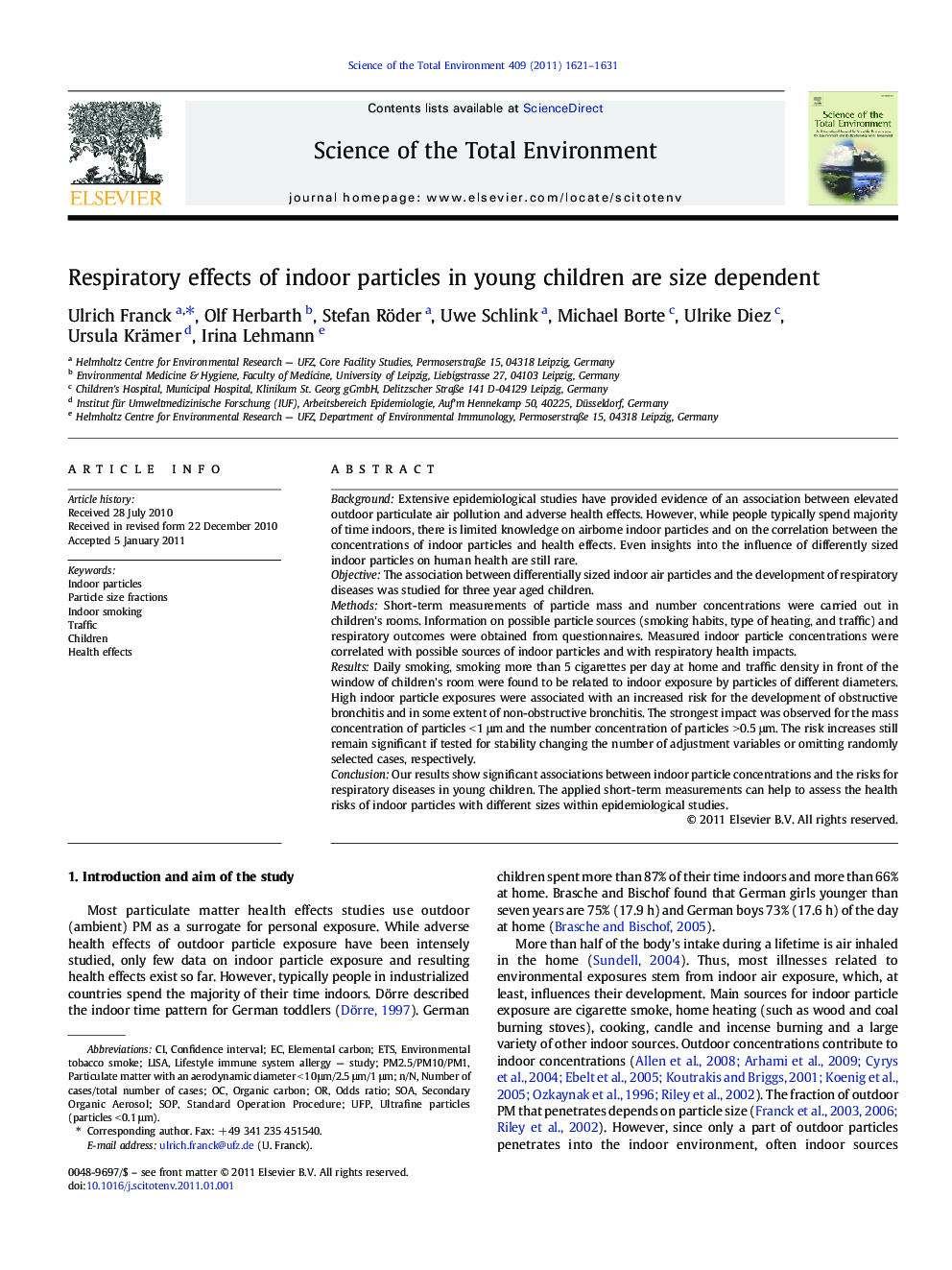| Article ID | Journal | Published Year | Pages | File Type |
|---|---|---|---|---|
| 4430648 | Science of The Total Environment | 2011 | 11 Pages |
BackgroundExtensive epidemiological studies have provided evidence of an association between elevated outdoor particulate air pollution and adverse health effects. However, while people typically spend majority of time indoors, there is limited knowledge on airborne indoor particles and on the correlation between the concentrations of indoor particles and health effects. Even insights into the influence of differently sized indoor particles on human health are still rare.ObjectiveThe association between differentially sized indoor air particles and the development of respiratory diseases was studied for three year aged children.MethodsShort-term measurements of particle mass and number concentrations were carried out in children's rooms. Information on possible particle sources (smoking habits, type of heating, and traffic) and respiratory outcomes were obtained from questionnaires. Measured indoor particle concentrations were correlated with possible sources of indoor particles and with respiratory health impacts.ResultsDaily smoking, smoking more than 5 cigarettes per day at home and traffic density in front of the window of children's room were found to be related to indoor exposure by particles of different diameters. High indoor particle exposures were associated with an increased risk for the development of obstructive bronchitis and in some extent of non-obstructive bronchitis. The strongest impact was observed for the mass concentration of particles < 1 μm and the number concentration of particles > 0.5 μm. The risk increases still remain significant if tested for stability changing the number of adjustment variables or omitting randomly selected cases, respectively.ConclusionOur results show significant associations between indoor particle concentrations and the risks for respiratory diseases in young children. The applied short-term measurements can help to assess the health risks of indoor particles with different sizes within epidemiological studies.
Research Highlights► In this study we tested the usefulness of short-term measurements of size-segregated indoor particle concentrations within an epidemiological study. In such studies, these measurements may be an objectifying tool if used for revealing of relationships between exposure sources and exposure concentrations. ► Traffic in front of the window of children’s room and smoking at home (outside children’s room) have been identified to be related to elevated exposure against particles of various size-classes. ► Measured indoor concentrations of differently sized particles are found to be related to children’s risks of obstructive bronchitis and in some extent of non-obstructive bronchitis.
